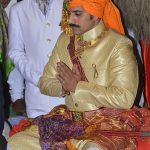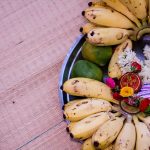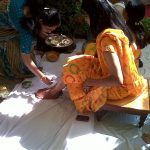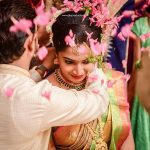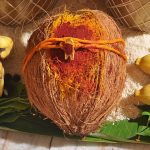The Kodavas are a unique group of people from the Kodagu or Coorg region of Karnataka. They are traditionally agriculturists but have martial customs. They worship their ancestors and weapons. One distinct feature in a Kodava wedding is the absence of a Brahmin officiating priest at the ceremony. Kodava wedding rituals are fun, and the families serve non-vegetarian food as well as alcohol to the guests.
Matchmaking
Unlike most Hindu communities, there is no great emphasis on matching horoscopes among the Kodavas. Kodavas believe that if the minds of a couple are in harmony, they will make a good match. The Kodava families look for a suitable match, and then the families meet and discuss the possibilities of a match. The Aruva is a person who is close to the family and is also a man of great knowledge and experience. So, every family has its Aruva, who will accompany them on matchmaking discussions and at every important decision-making juncture. The Aruva is the mediator between the two families. The families may consult an astrologer to fix a good Muhurta for the engagement as well as the wedding.
Urkooduva
The Kodava wedding is generally a two-day celebration. The first day is the Uru Kodava, and the second is the Karip Muripa. The Uru Kodava is a celebration involving all the village’s people (Uru). All the members of the village participate in the Uru Kodava rituals and wedding preparations. All the Okka (clan) leaders in the Nad (region) around the village participate in the rituals and accompany the groom to bring his bride home.
Marriage Pandal
The marriage Pandal is set up on Uru Kodava day. The pandal is made with posts, a canopy made of tender jackfruit trees, and the fifth post is taken from a sap oozing tree. The Aruva fixes the fifth stump which is the most important one for the Pandal. The pandal is also decorated with banana bunches and mango leaves. The Aruva also supervises the preparation of the wedding feast.
The Bride And The Groom
The Groom wears a long-sleeved white garment called a Kupya, a long robe-like garment, and a gold turban with a red veil-like attachment. He ties a red silk sash around his waist and tucks a Peeche Kathi (Coorg dagger) into the front and an Odi Kathi (Broad-blade war knife) into the back.
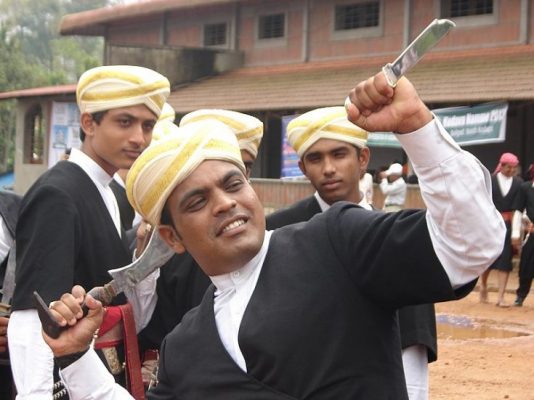
He also wears Kati Bale (gold bangles) and a garland. The groom carries a Gejje Thande, a staff made from the Karimara tree and decorated with silver strips and bells in his right hand.
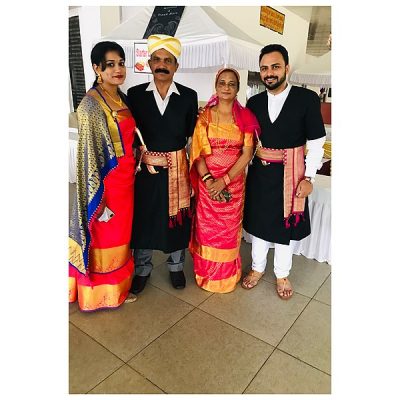
The bride wears a red silk saree in the traditional style with pleats at the back. She wears a long-sleeved red blouse, traditional gold jewelry, silver jewelry on her feet, and a garland. The bride covers her head with a silk cloth similar to her saree.
Baale Birud
The unique Baale Birud ceremony is the first Kodava wedding ritual. Nine banana saplings are fixed on a wooden stake. The menfolk pray to their ancestors and the village gods. The first male member of the family slashes the first three banana saplings, the next person, the next three saplings, and the third person, the last three saplings. They then proceed to the wedding Pandal.
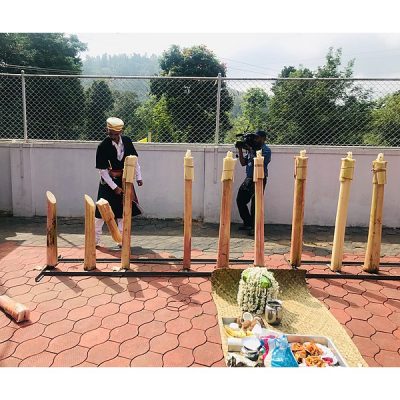
The best man or Bojakaara holds an umbrella covered with a white cloth over the groom’s head. The groom’s sister carries a pot on her head and leads the procession. In the olden days, the groom’s family would bring rice, meat, and other food items to the wedding to contribute to the feats and ease the burden on the bride’s family.

The Groom’s Arrival
A young girl from the bride’s family washes the groom’s and the best man’s feet. The bride’s family welcomes the groom’s family by showering rice on them. The bride’s mother welcomes the groom and leads him to a small stool where he sits. The bride arrives after the groom. She is greeted in the same manner. She sits on a stool next to the groom.
The couple seeks the blessings of Kaveri Amma, and the eldest couple present blesses them and feeds them milk from a silver container. The Aruvas of the groom’s and the bride’s families speak a traditional dialogue called the Sammanda Kodupo. The Aruva lists the bride’s rights and the groom ties a small bag containing gold, silver, and copper coins into the corner of the bride’s saree. This symbolizes the sharing of all possessions by the couple. There are no priests involved in the Kodava wedding rituals. The guests bless the couple and offer their wishes.
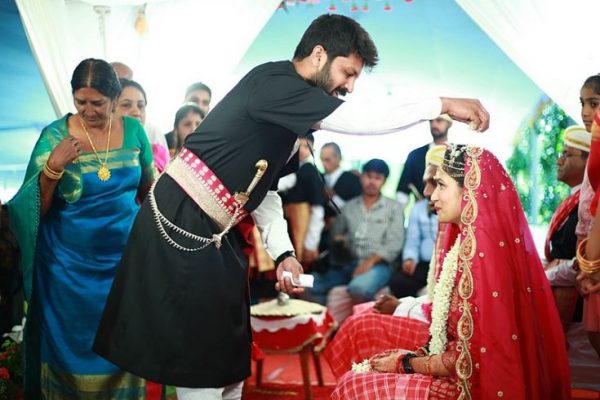
Pathak
A married Kodava woman wears a Pathak or golden ornament of gold coins set with coral or rubies. Her mother puts the Pathak on her married daughter.
The Wedding Feast
The Kodava wedding feast is served on a banana leaf. After the Kodava wedding rituals, the bar is open, and alcohol and homemade wine are served. The menu usually includes Kadambuttu (steamed rice balls), Paputtu (steamed rice bread), and Pandi (pork) curry, chicken curry, vegetables, rice, payasam, and black coffee.




